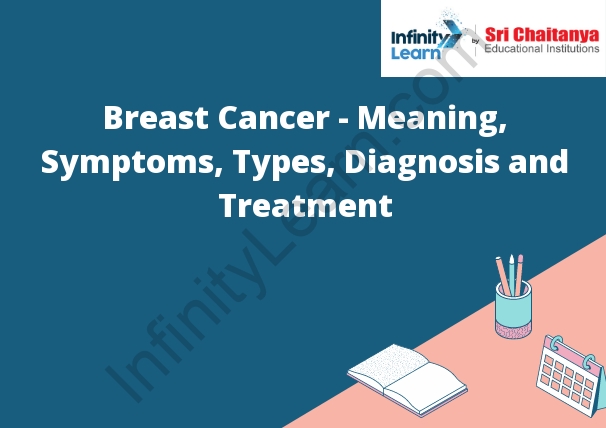Table of Contents
Introduction of Breast Cancer
Breast cancer is a type of cancer that starts in the breast tissue. It is the most common type of cancer in women. Breast cancer can occur in any woman, but it is more common in older women. Mammograms can help find breast cancer early, when it is easier to treat.

Breast Cancer Information
There are many types of breast cancer, but the most common is ductal carcinoma, which begins in the cells that line the milk ducts. Breast cancer can also start in the tissues surrounding the ducts (invasive ductal carcinoma), in the lobes of the breast (lobular carcinoma), or in other tissues of the breast.
- Breast cancer is the second most common cancer in women after skin cancer. About 1 in 8 women in the United States will develop breast cancer during their lifetime. Breast cancer can occur at any age, but the risk increases as a woman gets older.
- Most breast cancers are found by women themselves or by their health care providers. A woman who finds a lump in her breast should see her health care provider right away.
- There are many types of breast cancer, but the most common is ductal carcinoma, which begins in the cells that line the milk ducts. Breast cancer can also start in the tissues surrounding the ducts (invasive ductal carcinoma), in the lobes of the breast (lobular carcinoma), or in other tissues of the breast.
- Breast cancer is the second most common cancer in women after skin cancer. About 1 in 8 women in the United States will develop breast cancer during their lifetime. Breast cancer can occur at any age, but the risk increases as a woman gets older.
- Most breast cancers are found by women themselves or by their
Why Breast Cancer Occurs?
One of the main causes of breast cancer is the exposure to radiation. This may be from x-rays, radiation therapy for cancer, or radiation from some other source. Other causes of breast cancer include the following:
- Inherited genes that increase the risk of breast cancer
A history of breast cancer in your family Being over the age of 50 Obesity
Taking estrogen replacement therapy
Drinking alcohol
Not having children or having them late in life
Breastfeeding for a long time
Taking birth control pills
Breast Cancer Symptoms
The most common symptoms of breast cancer are a lump or mass in the breast, a change in the size or shape of the breast, nipple discharge, and skin irritation or changes. Other symptoms include pain in the breast, chest, or arm; swelling of the lymph nodes in the armpit; and bone pain.
Types of Breast Cancer
There are several types of breast cancer. The most common types are ductal carcinoma, lobular carcinoma, and inflammatory breast cancer.
Classification of Breast Cancer
The most common type of breast cancer is ductal carcinoma, which begins in the ducts that carry milk from the breast to the nipple. Lobular carcinoma, which begins in the milk-producing glands, is the next most common type.
Other types of breast cancer include:
- • Inflammatory breast cancer. This is a rare type of cancer in which the breast looks inflamed and red.
- • Paget disease of the nipple. This is a rare type of cancer that starts in the nipple.
- • Male breast cancer. This is a rare type of cancer that occurs in men.
- • Triple-negative breast cancer. This is a type of breast cancer that doesn’t have the three most common types of receptors on its surface: estrogen, progesterone, and HER2. This type of cancer is more aggressive than other types.
- • Breast cancer that has spread to other parts of the body (metastatic breast cancer).
- Breast cancer is also classified by how far it has spread:
- • Stage 0. This is cancer that is found in the milk ducts or glands and has not spread to other parts of the body.
- • Stage I. This is cancer that is found in the milk ducts or glands and has spread to the lymph nodes under the arm.
- • Stage II. This is cancer that is found in the milk ducts or glands and has spread to
Breast Cancers have 5 Stages
The five stages of breast cancer are: stage 0 (in situ), stage I, stage II, stage III, and stage IV.
- Stage 0 breast cancer is cancer that is confined to the ducts and lobules (the structures that produce milk) in the breast.
- Stage I breast cancer is cancer that is confined to the breast and has not spread to the lymph nodes.
- Stage II breast cancer is cancer that has spread to the lymph nodes but is still confined to the breast.
- Stage III breast cancer is cancer that has spread to the lymph nodes and may have spread to other parts of the body, such as the lungs or bones.
- Stage IV breast cancer is cancer that has spread to other parts of the body, such as the lungs or bones.
Diagnosis of Breast Cancer
The diagnosis of breast cancer is typically made after a woman has a physical examination and imaging tests such as a mammogram, ultrasound, or MRI. If a lump is found, a biopsy may be performed to determine if the lump is cancerous.
Treatment of Breast Cancer
The main treatments for breast cancer are surgery, radiation therapy, and chemotherapy. The treatment that is best for a particular woman depends on the stage of her cancer, her age, and her overall health.
Breast Cancer Treatment
The treatment of breast cancer usually depends on the stage of the cancer, the size of the tumor, the hormone receptor status of the tumor, and the patient’s age and health.
Most breast cancers are treated with surgery, radiation therapy, and chemotherapy. Hormone therapy is also used for some patients.









